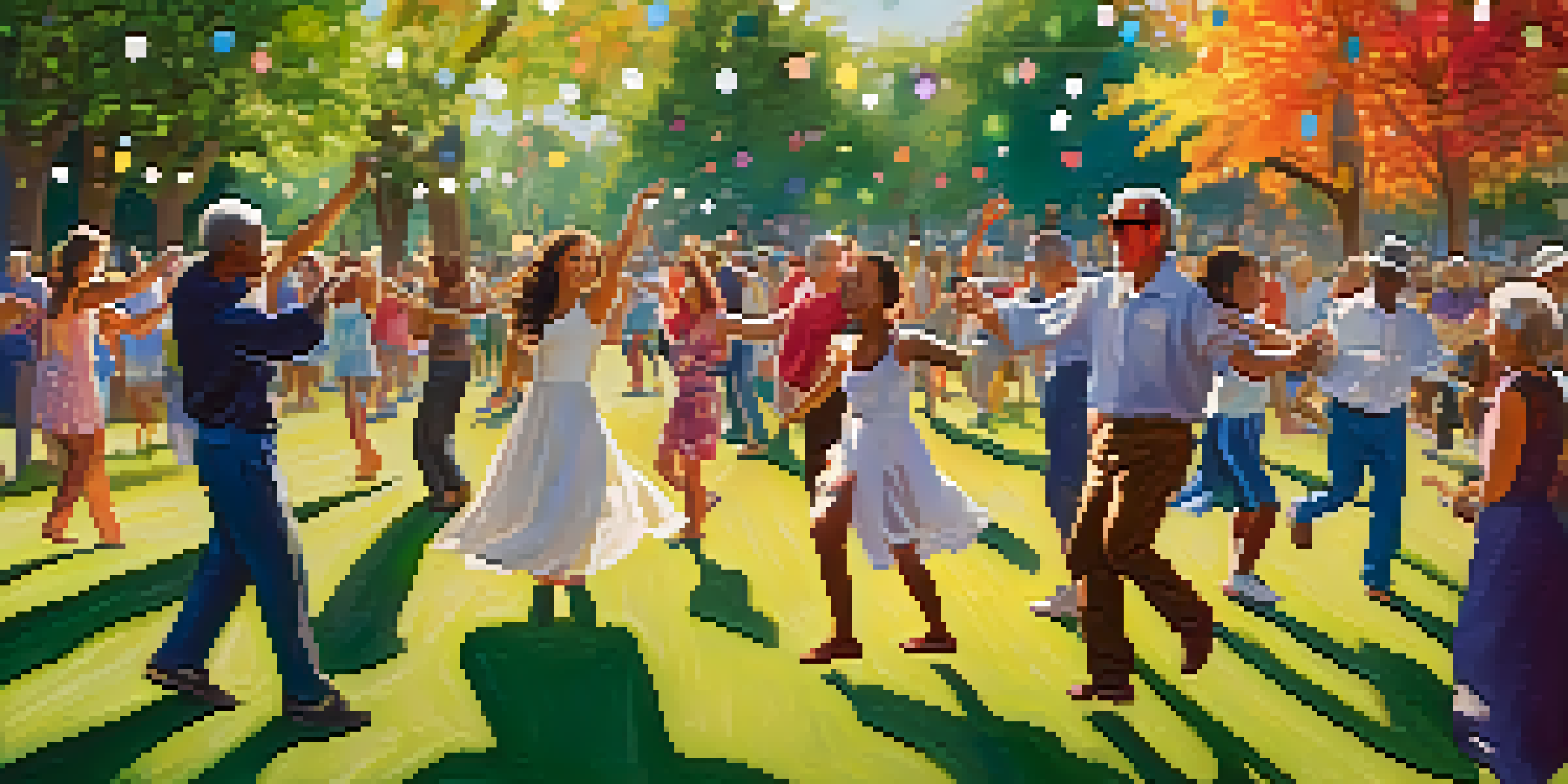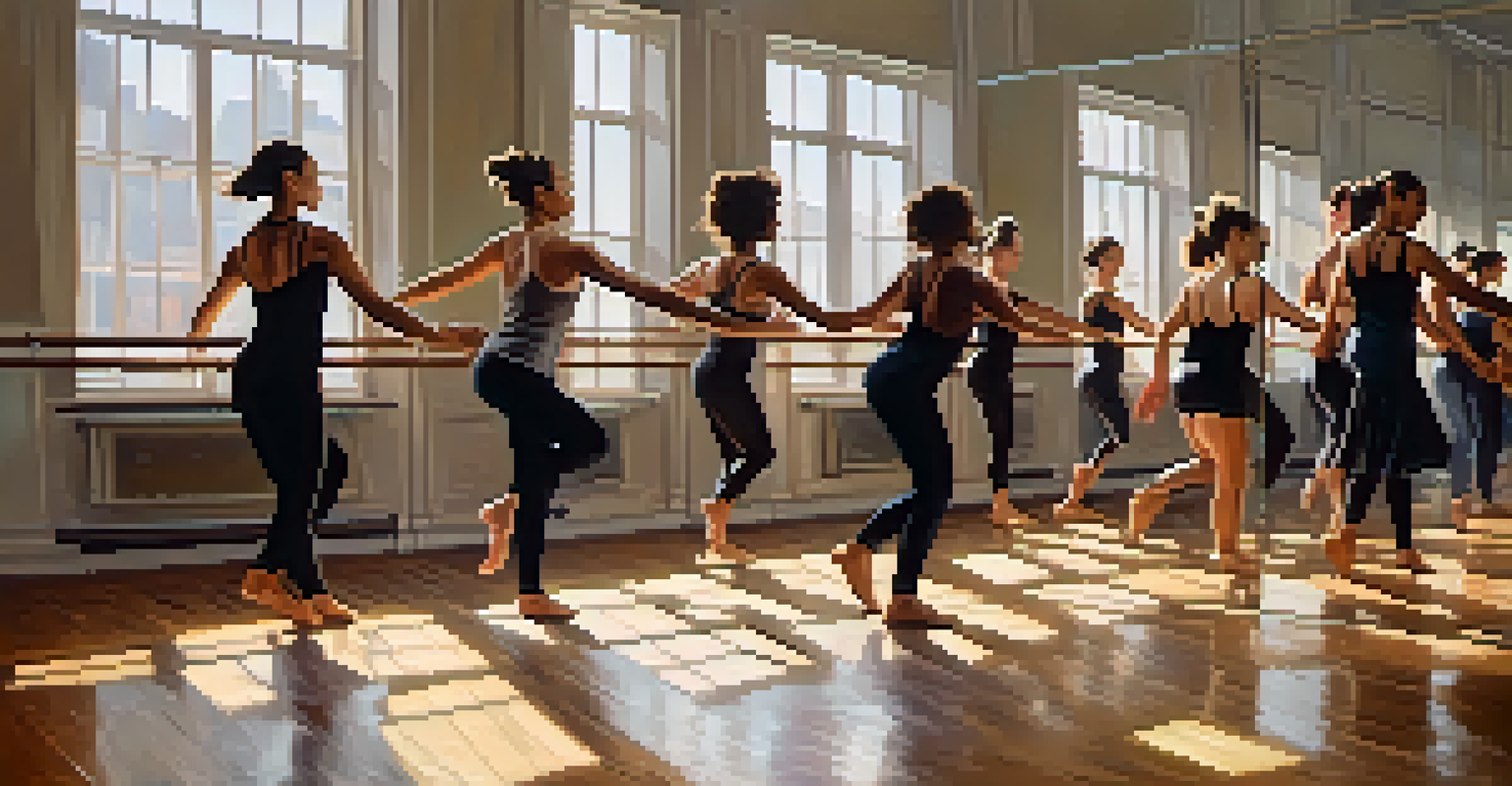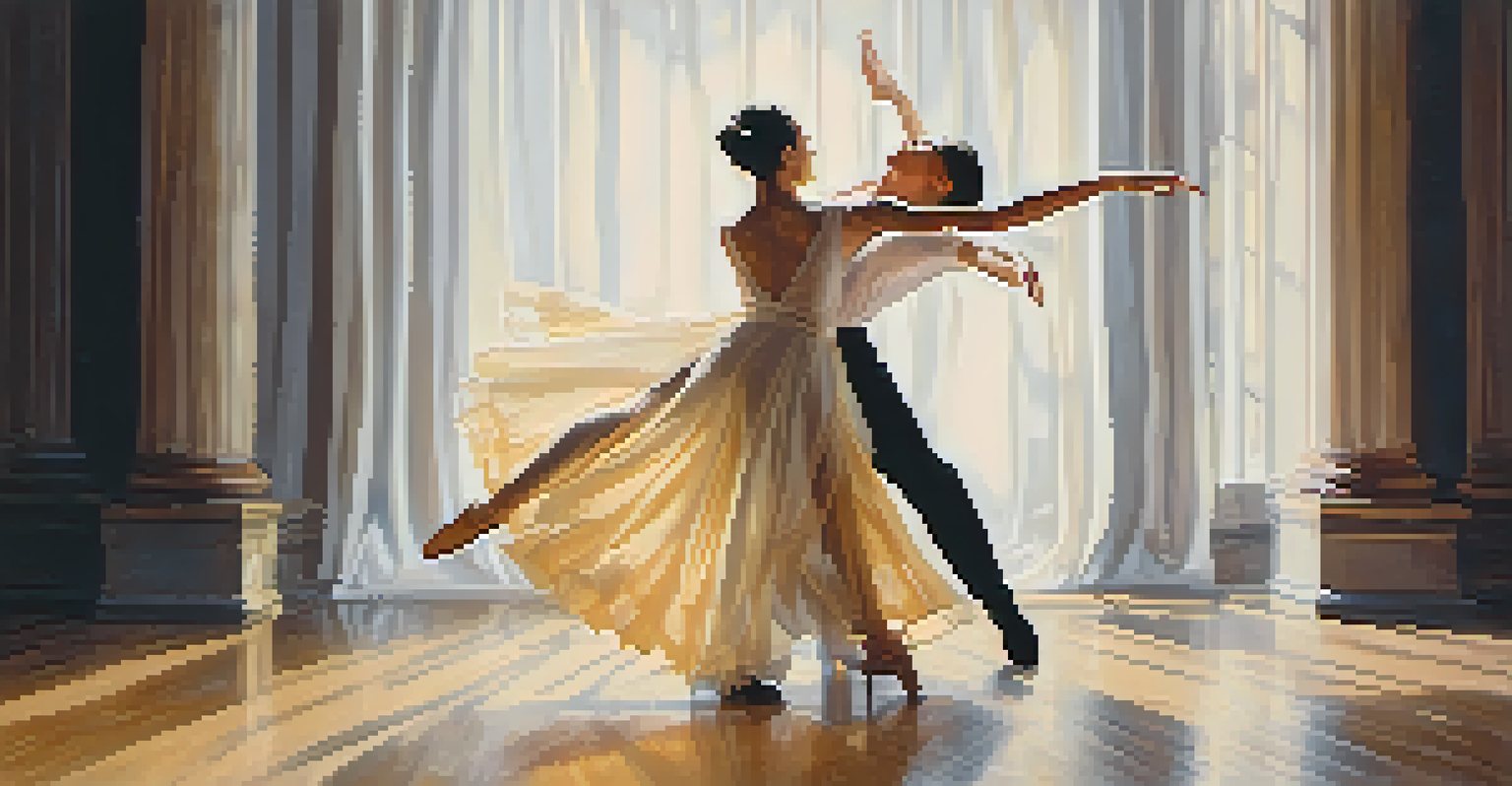Connecting Through Dance: Bridging the Loneliness Gap

The Power of Dance in Connecting People
Dance has an incredible ability to bring people together, transcending barriers like language and culture. When we move to music, we often find common ground, creating connections that might not happen in everyday conversations. Whether it's a salsa class or a spontaneous dance party, the shared experience of rhythm and movement fosters a sense of belonging.
Dance is the hidden language of the soul.
Imagine a crowded dance floor where strangers become friends through the simple act of dancing. As bodies move in sync, walls come down, and laughter fills the air. This communal energy is vital, especially in our fast-paced, technology-driven world where loneliness can creep in unnoticed.
By participating in dance, individuals not only express themselves but also tap into a collective joy. This shared experience can strengthen community ties and create lasting friendships, helping to bridge the loneliness gap that so many face today.
Dance as a Form of Emotional Expression
For many, dance serves as a powerful outlet for emotions, allowing individuals to express feelings that words sometimes fail to capture. Whether it's joy, sadness, or frustration, moving to music can be cathartic. This emotional release is not just personal; it can resonate with others, creating deeper connections.

Consider a contemporary dance class where participants express their personal stories through movement. Each dancer's unique interpretation invites empathy and understanding from others, fostering a connection through shared vulnerability. This emotional resonance can help alleviate feelings of isolation.
Dance Connects People Across Cultures
Dance transcends language and cultural barriers, fostering connections and community among individuals.
Moreover, when people come together to dance, they often share their experiences and stories, creating a supportive environment. This nurturing atmosphere can be particularly beneficial for those dealing with loneliness, as it encourages open dialogue and fosters community bonds.
Building Community Through Group Dance Activities
Group dance activities, such as line dancing or Zumba, provide structured opportunities for individuals to connect. These classes often attract diverse participants, creating a melting pot of backgrounds and experiences. As people learn new moves together, friendships are formed, and a sense of community develops.
Dancing is creating a sculpture that is visible only for a moment.
Imagine a local park hosting a summer dance event, where people of all ages come together to enjoy music and movement. The shared goal of learning a choreographed routine creates camaraderie, breaking down social barriers and uniting participants in a common purpose. Such events are perfect for combating loneliness, as they offer a space for social interaction.
Additionally, dance communities often extend beyond the classroom or event space, as friendships formed on the dance floor lead to social gatherings, support networks, and even collaborations. This sense of belonging is essential in reducing feelings of isolation and fostering lifelong connections.
The Role of Dance in Mental Health and Well-Being
Engaging in dance is not just fun; it also has significant mental health benefits. Studies have shown that dance can reduce symptoms of anxiety and depression, providing an uplifting experience that enhances overall well-being. The endorphins released during physical activity can help lift spirits and promote a positive outlook.
Moreover, the social connections made through dance can provide a critical support network for individuals struggling with loneliness. When people feel connected and supported, they are better equipped to manage their mental health challenges. Dance serves as both a physical and emotional outlet, reinforcing the importance of community in mental well-being.
Emotional Expression Through Dance
Dance serves as a powerful outlet for expressing emotions, creating empathy and deeper connections among participants.
Additionally, dance classes often incorporate mindfulness practices, encouraging participants to be present in the moment. This focus on the here and now can help combat negative thoughts and feelings associated with loneliness, promoting a healthier mindset. By prioritizing mental health through dance, individuals can find joy in movement and connection.
Dance: A Universal Language of Connection
Dance transcends cultural and linguistic barriers, making it a universal language of connection. No matter where you come from, the rhythm of music can spark a sense of familiarity and belonging. This shared experience can be a reminder that, despite our differences, we all have a common desire to connect and express ourselves.
Think about traditional dances from around the world, each telling a unique story through movement. When people engage in these dances, they not only learn about different cultures but also find commonality in the joy of sharing that experience. This cultural exchange fosters understanding and appreciation, bridging gaps that may otherwise divide us.
As individuals participate in diverse dance forms, they open themselves up to new perspectives and friendships. This willingness to connect through dance can lead to an enriching experience that combats loneliness and promotes unity across various communities.
Creating Safe Spaces for Dance and Connection
Creating safe spaces for dance is essential in encouraging participation and fostering connections. These environments should be welcoming and inclusive, allowing individuals to feel comfortable expressing themselves through movement. When people feel safe, they're more likely to step out of their comfort zones and engage with others.
Community centers, studios, and even outdoor spaces can serve as these safe havens for dance. By hosting events that prioritize inclusivity, organizers can ensure that everyone—from beginners to experienced dancers—feels welcome. This focus on safety and acceptance can help combat loneliness by providing opportunities for social interaction.
Building Lifelong Friendships
Shared dance experiences often lead to deep, lasting friendships that provide support and combat loneliness.
Furthermore, safe spaces allow for the exploration of different dance styles, promoting diversity and understanding. When individuals come together to share their unique experiences, they build connections that can last a lifetime, creating a supportive network that helps bridge the loneliness gap.
Fostering Lifelong Friendships Through Dance
Dance has the power to foster lifelong friendships, as shared experiences create bonds that can withstand the test of time. Many individuals who start dancing together often find themselves forming deep connections that extend beyond the dance floor. These friendships can be a vital support system, especially for those facing loneliness.
Consider a dance duo that has been performing together for years. Their partnership is built not only on shared passion but also on trust and understanding developed through countless hours of practice and performance. This relationship exemplifies how dance can unite people, creating a friendship that is both joyful and resilient.

Moreover, as dancers navigate the ups and downs of life together, their shared experiences can lead to a profound sense of belonging. These connections, forged through the love of dance, remind us that we are never truly alone. By prioritizing relationships built through movement, individuals can combat loneliness and celebrate the joy of connection.